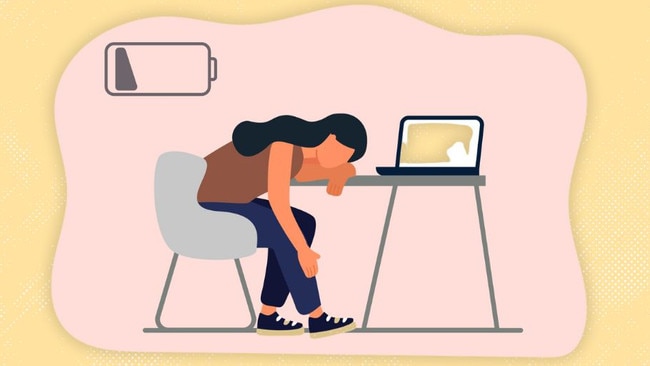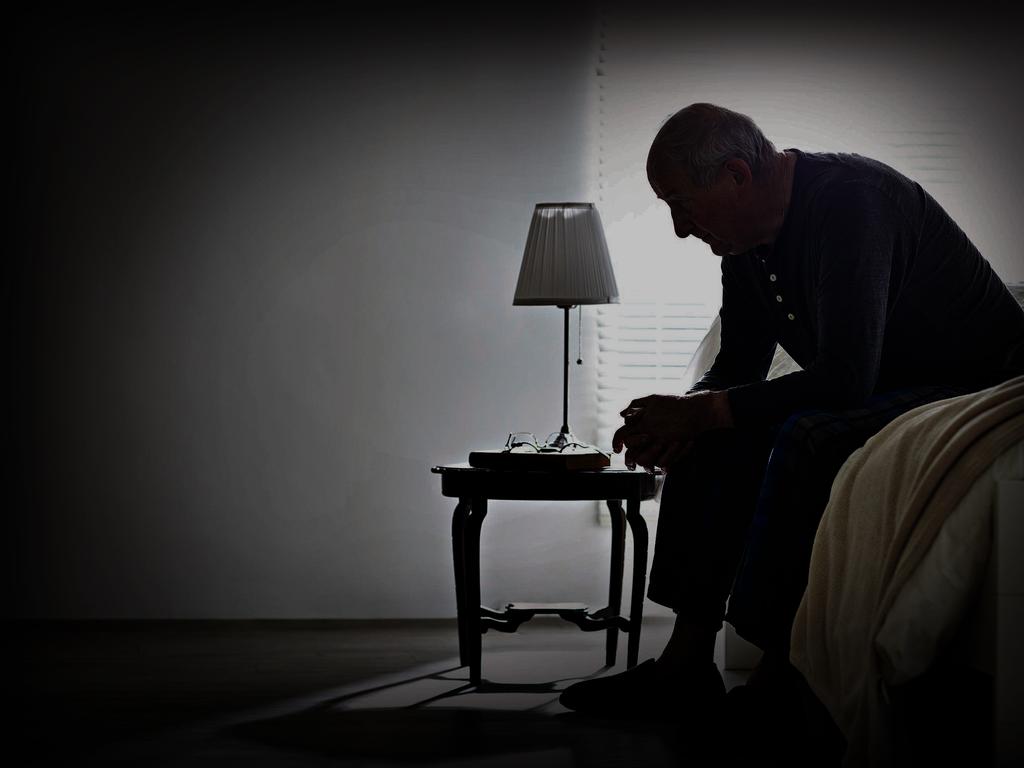Having too many sickies? This might be the problem

We are living longer, working for more years and are accessible all the time, thanks to technology. Work-life balance is elusive for most people, making burnout almost impossible to avoid unless you familiarise yourself with the early symptoms and start practising self-care. The World Health Organisation acknowledges that if work stressors aren’t managed, this can result in a condition called “clinical burnout” where mild burnout symptoms become so severe that medical intervention and prolonged time away from work are required.
KEY POINTS
- Burnout can affect anyone. It presents as profound fatigue, a sense of dread about the day ahead and develops after a period of prolonged and repeated stress, which commonly occurs in work environments.
- Self-care can help to reduce the severity of symptoms.
- If symptoms are overlooked, there can be severe physical and psychological symptoms with emotional disassociation, self-doubt and lack of motivation needing time away from work and intensive counselling.
- Severe symptoms don’t go away even with a change of job or whilst on a holiday. Counselling is helpful for recovery.
How burnout presents
People will commonly attend the doctor saying, “Doc, I feel tired all the time. Even if I spend hours in bed, I feel like I haven’t slept”, or “When I get home, I just want to sit down, not talk and switch off”. Others describe irritability, “flying off the handle at little things”. People at work may notice a change and comment, which then prompts a visit to the doctor. Anyone can succumb to it and despite the root cause usually stemming from external pressure such as work, people often see their general practitioner because they suspect their body is failing them in some way or that they themselves are the problem.
Given that some of the physical manifestations can feel like a heart attack (chest tightness and palpitations), or gastric ulcer (nausea and heartburn), food intolerance (diarrhoea and bloating from irritable/nervous bowel), shortness of breath causing hyperventilation dizziness, light-headedness and even near fainting episodes or a full-blown panic attack with cold sweats, it is not unusual to wonder if a sinister medical condition underlies this all.
Others feel anxious, sad or just flat and disengaged, and might fantasise about escaping. Absenteeism and an unprecedented number of “sickies” are noticed by others, as is impulsive behaviour or increased alcohol consumption. Coming to work meetings unprepared, or just not showing up at the last minute should be a warning to others that things are not quite right. Work environment factors where interpersonal conflict, job insecurity, increased workload or bullying exist are common triggers as are being undermined, gaslit or overlooked for a promotion.

Not all fatigue is burnout related
Not all fatigue is due to burnout, so when someone comes in saying, “hi Doc, I don’t know why, but I just feel tired all the time”, a series of steps are taken to exclude underlying disease and address modifiable factors. This starts with taking a thorough history, asking about alcohol, prescription and non-prescription drugs along with exercise, sleep patterns, home and work life. This is followed by a physical examination, recording some baseline investigations along with a weight measure, then confirming that health screens that have been missed, are performed. Most people leave the faecal occult blood test (the government “poo test” for 45-year-olds and above) on the shelf or in a drawer at home, so it’s important to get this done to exclude any hidden blood loss from the bowel. It’s easy to do and saves lives from bowel cancer. Along with all this, a range of blood tests might be ordered to exclude anaemia, lymphoma, infection, hormone disorders such as thyroid and adrenal disease, menopause, diabetes, some cancers and kidney disease along with further targeted investigations based upon the story, age, sex, family history, symptoms and physical examination findings. This all then gets pieced together to develop a picture of social, psychological and physical factors that might be contributing to the fatigue after excluding more sinister causes as listed below.
Some more serious conditions can present as fatigue warranting investigation:
- Suddenly feeling tired, especially if you were previously well.
- Experiencing weight loss without trying – in medicine we refer to this as “unintentional weight loss”.
- Any signs of bleeding in your urine, bowel motions, skin, vomit, or in your sputum when you cough.
- Unexplained changes in your menstrual cycle or seeing blood after the menopause.
- Increased difficulty with breathing either at rest or with activity.
- Enlarged lymph nodes in your neck, armpits and or groin.
- Unexplained fever, especially if you have night sweats for more than 3 weeks.
- Recent changes to your usual symptoms from your pre-existing chronic disease.
- Recent viral illness – long Covid is prevalent but there are other viruses and bacteria that can cause post-infection fatigue.
- A change in your medications.
- Fatigue after long-haul travel that is not related to “jet lag”.
- Pain, especially if it wakes you up from sleep.
Addressing the causes of burnout
The conversation that follows upon delivery of test results sets the path for the very important steps towards recovery. It includes assessing the severity of burnout, possible triggers and environmental factors that are within the realms of influence. The degree by which someone is affected can range from a mild, short-term stress disorder to debilitating “clinical burnout”, where the person is less inclined to seek help when there is stress. They tend to persist without complaining, often to their detriment. This is all further complicated by the fact that few people can just pick up and leave a toxic work environment, nor can they leap from one job to the next. It might also come as a surprise to hear that going away on a long holiday, does not fix the underlying issues. Burnout symptoms don’t go away even with a change of job or whilst on a holiday. They simply follow the person around.
Counselling can help to address the self-doubt, low self-esteem and mood disorder that develop over time, which can be provided at some places of work without charge, for several sessions through an Employee Assistance Plan. Alternatively, a visit to the GP for a discussion and possible referral to a psychologist might be more suitable. Online services such as Beyond Blue can also help. Where toxic work environments exist, safe processes for reporting such behaviour, seeking mediation and corrective action can be sought through human resources.

Tips to prevent burnout
Not all environments can be controlled so it helps to know some basic tips to avoid burnout. Start with self-awareness, being mindful and in the present. Distractions affect our concentration so when talking to others, listen and give your whole attention to the person you are speaking with. This improves retention of information and enhances dialogue. This also requires putting a limit to phone access and responding to social media while listening. You simply can’t do both at the same time.
When making choices around work and life balance, try to prioritise spending time with your loved ones and those who support you. Respond to their messages above others that come through.
Eat healthier and avoid pouring the glass of wine after work, for at least three nights per week.
Make a promise to yourself to exercise even in short bursts throughout the day such as a brisk walk or jog for three minutes out of a 15-minute walk – these can have positive psychological and health impacts. Sometimes, we don’t have the hour to spare but a regular, daily burst of intense exercise is beneficial.
Try to add some laughter to every day and if you are feeling negative and sad about the world or work, avoid the news. Aim to have good-quality sleep and see your GP to learn about sleep hygiene.
Daily meditation, even for three minutes, helps to calm the mind as you observe your thoughts without responding to them. Taking 10 deep, slow breaths when tense can be restorative. Connect with nature even if it’s in your garden or a local park and keep a diary to which you should add your favourite uplifting quotes or a mantra for yourself.
Although some degree of burnout is a near inevitability for busy people, early intervention plays an important part in mitigating its impact and preventing clinical burnout from developing.
Associate Professor Magdalena Simonis AM is a senior honorary research fellow at the University of Melbourne department of general practice.
This column is published for information purposes only. It is not intended to be used as medical advice and should not be relied on as a substitute for independent professional advice about your personal health or a medical condition from your doctor or other qualified health professional.
REFERENCES:
- WHO on burnout
- van Dam, A. (2021). A clinical perspective on burnout: diagnosis, classification, and treatment of clinical burnout. European Journal of Work and Organisational Psychology, 30(5), 732–741.
- Beyond Blue
- WorkSafe






Feeling tired and flat all the time, waking up after hours of sleep not wanting to get up, feeling a sense of dread about the day that lies before you and not looking forward to catching up with friends, are some of the signs of burnout. Burnout is a state of inexplicable exhaustion where the mind-body connection is severely disrupted, manifesting in both physical and emotional symptoms. It can develop after a period of prolonged and repeated stress which commonly occurs in work environments, from a series of life challenges or a combination of both.